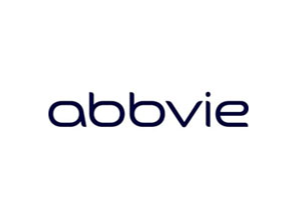Drug information
Not provided
Glecaprevir and Pibrentasvir
Maviret, Mavyret
Small molecule
Glecaprevir and Pibrentasvir (G/P) is a fixed-dose combination therapy indicated for the treatment of adult patients with chronic hepatitis C virus (HCV) genotypes 1-6 with or without compensated cirrhosis. G/P consists of two pangenotypic direct-acting antiviral agents: (1) Glecaprevir which targets the HCV non-structural viral protein 3/4A (NS3/4A) serine protease, and (2) Pibrentasvir which inhibits the HCV NS5A protein - both of which are essential for viral RNA replication and viron assembly. G/P is postulated to possess advantageous pharmacological properties - including suitable target plasma exposures, half-life duration and aqueous solubility - that could potentially enable the development of a cost-effective long-acting injectable formulation via particle-processing technologies.
Unknown
Unknown
Therapeutic area(s)
- HCV
- Treatment
Administration route
Oral, Intramuscular
Associated long-acting platforms
Aqueous drug particle suspension
Use of drug
- Administered by a nurse
- Administered by a specialty health worker
Not provided
Not provided
Dosage
Not provided
Not provided
Not provided
Not provided
Not provided
Comment & Information
Developer(s)

AbbVie Inc. is a global biopharmaceutical company that manufactures and develops innovative medicines as part of a diversified portfolio across several therapeutic categories including immunology, oncology, neuroscience, aesthetics and eyecare. Headquartered in North Chicago, Illinois, AbbVie was founded in 2013 following a successful corporate spin-off from its parent company Abbott Laboratories.
Drug structure
Scale-up and manufacturing prospects
Long-acting formulations of Glecaprevir and Pibrentasvir (G/P) are still in the early stages of drug development and therefore manufacturing information is limited with few reported examples. One novel approach currently being pioneered by researchers at Tandem Nano Ltd. utilises a proprietary Solid Drug Nanoparticle (SDN) technology platform to achieve high levels of G/P drug loading (>500mg/mL). Interestingly, pre-clinical pharmacokinetic assessments displayed an apparent difference in the release kinetics of both drugs which could be related to differences in aqueous solubility.
Not provided
Proposed minimally acceptable characteristics for prospective long-acting G/P formulations include: (1) 12-month shelf life as a powder with no cold chain required, (2) suitable drug volume enabling a one monthly intramuscular injection, (3) manageable injection site reaction, and (4) cost equal or less than the oral therapy equivalent.
Not provided
Excipients
Not provided
Not provided
Not provided
Delivery device(s)
Not provided
Publications
Thomas DL, Owen A, Kiser JJ. Prospects for Long-Acting Treatments for Hepatitis C. Clin Infect Dis. 2022 Nov 21;75(Suppl 4):S525-S529. doi: 10.1093/cid/ciac715. PMID: 36410380; PMCID: PMC9678383.
In 2019, more than 4 years after the widespread availability of safe, oral, curative treatments, an estimated 58 million people were living with hepatitis C virus infections (PLWHC). Additional tools may enable those not yet reached to be treated. One such tool could be long-acting parenteral formulations of HCV treatments, which may allow PLWHC to be diagnosed and cured in a single encounter. Although existing highly effective oral medications might be formulated as long-acting parenteral treatments, pharmacological, regulatory, patent, and medical challenges have to be overcome; this requires the concerted efforts of PLWHC, researchers, funding agencies, industry, the World Health Organization, and other stakeholders.
Additional documents
No documents were uploaded
Collaborate for development
Consider on a case by case basis, collaborating on developing long acting products with potential significant public health impact, especially for low- and middle-income countries (LMICs), utilising the referred to long-acting technology
Share technical information for match-making assessment
Provide necessary technical information to a potential partner, under confidentiality agreement, to enable preliminary assessment of whether specific medicines of public health importance in LMICs might be compatible with the referred to long-acting technology to achieve a public health benefit
Work with MPP to expand access in LMICs
In the event that a product using the referred to long-acting technology is successfully developed, the technology IP holder(s) will work with the Medicines Patent Pool towards putting in place the most appropriate strategy for timely and affordable access in low and middle-income countries, including through licensing
